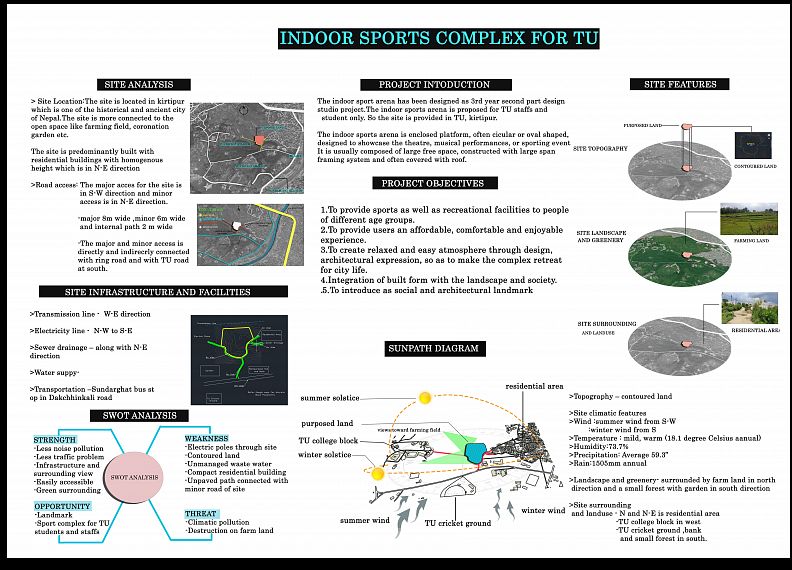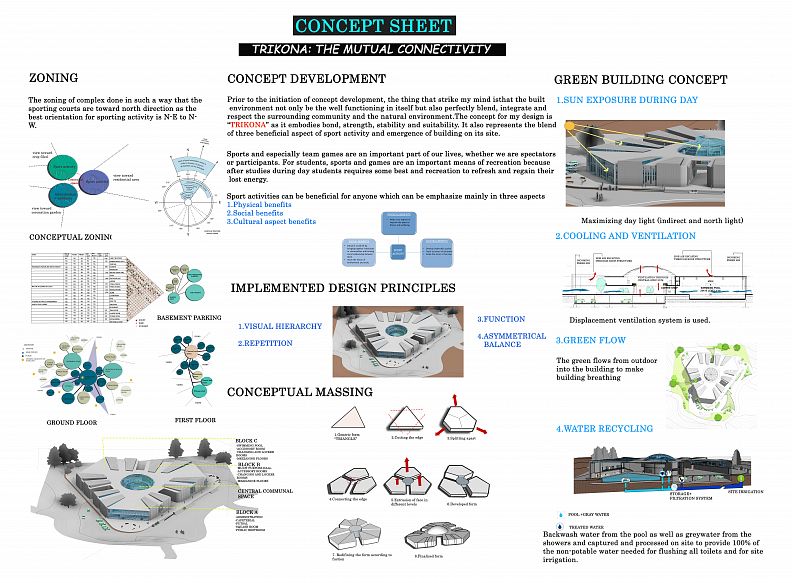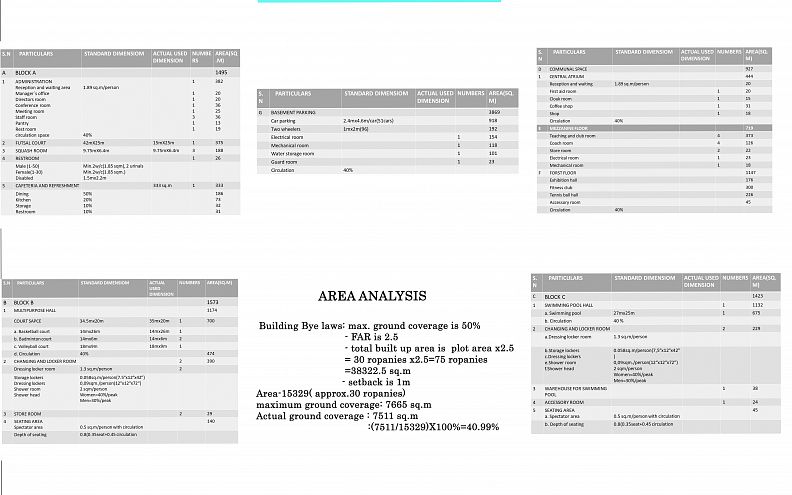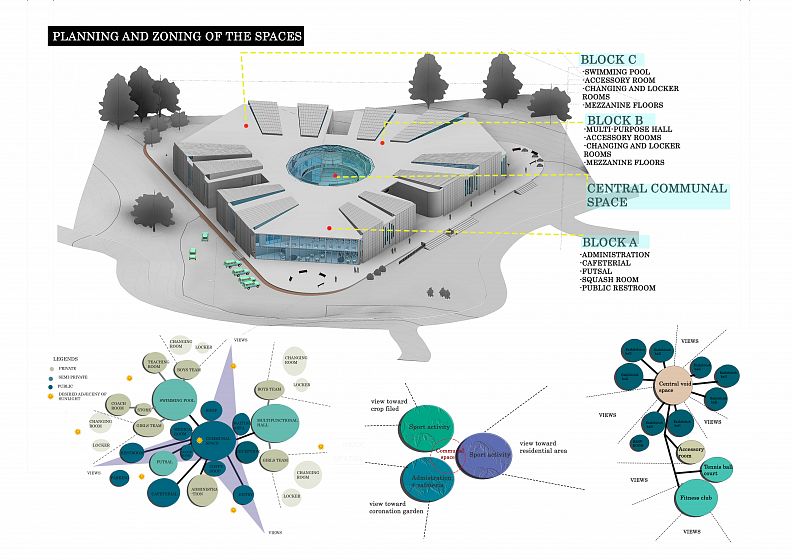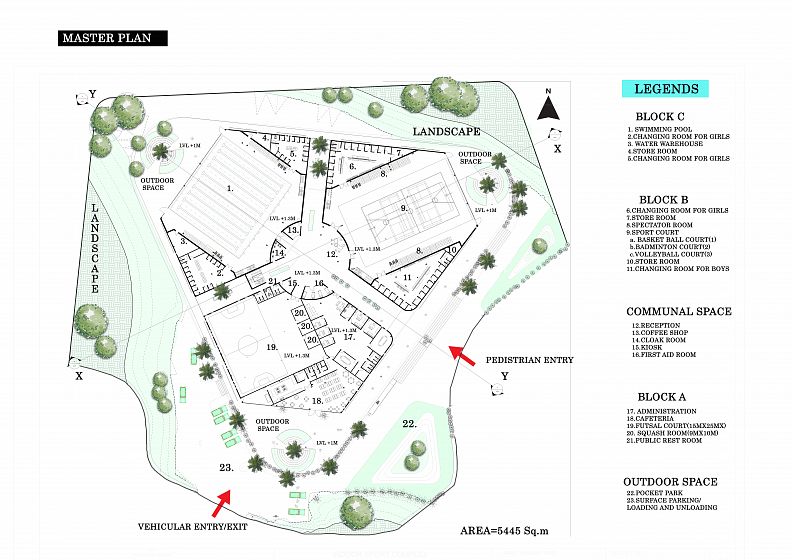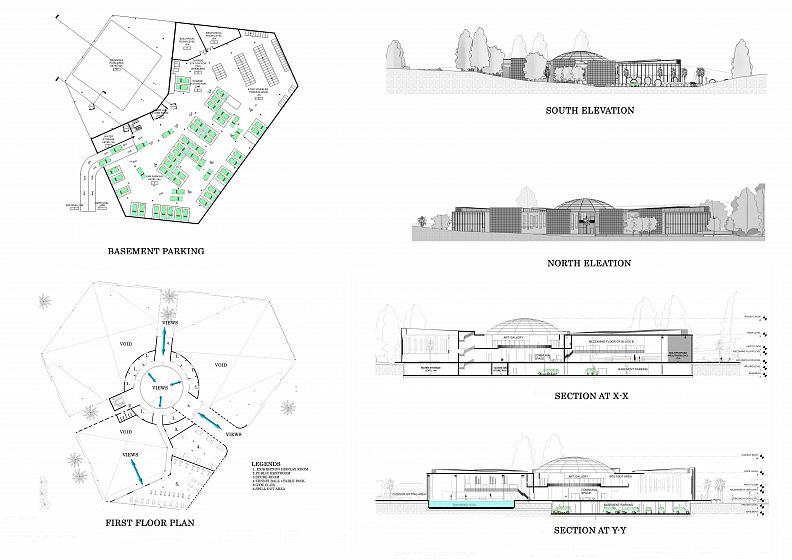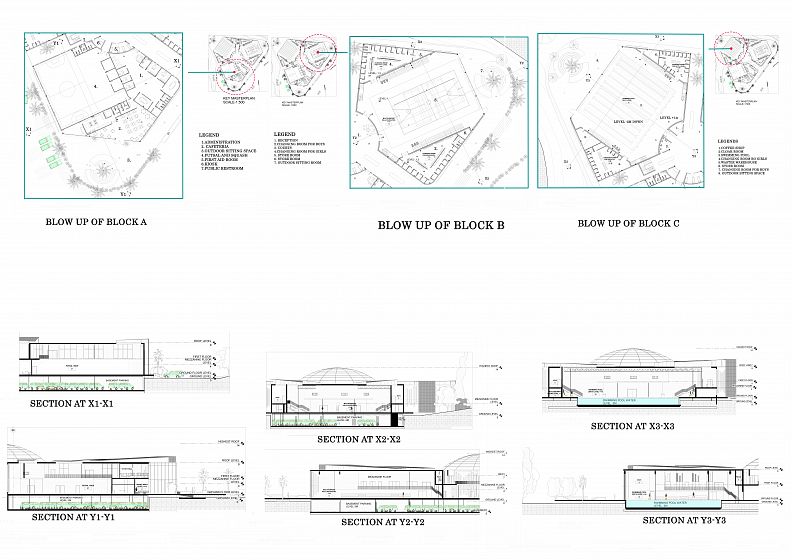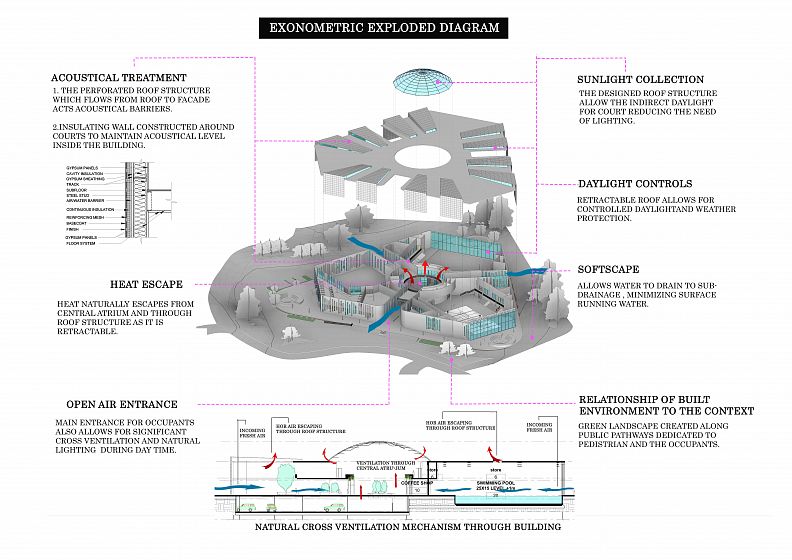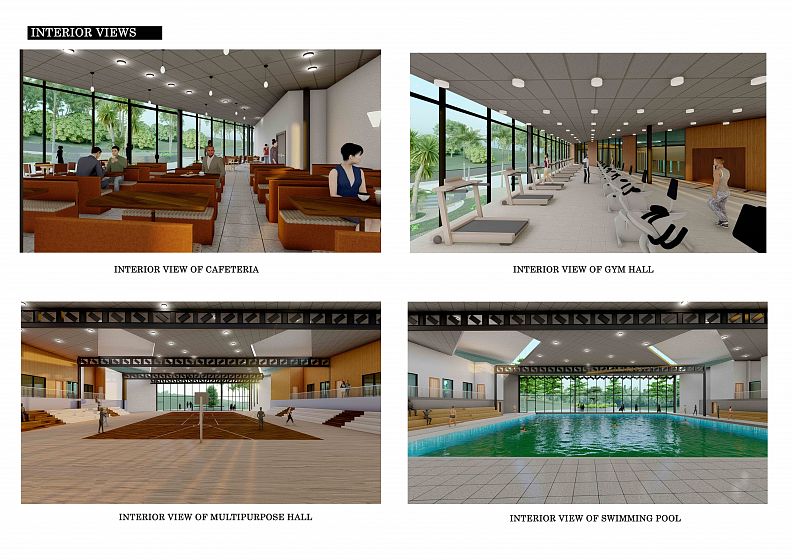INDOOR SPORTS COMPLEX

Project idea
This project was to be designed mainly for the TU staffs and students. The main idea of this project is creation of the space that is good for both recreation and social interaction within within same roof. The given site is located in Kirtipur, Kathmandu, Nepal. The site was a little bit challenging because the site was contour land with the valley at the center and the site adjacent land was the agricultural land. I took this challenge as the opportunity for design. Initially I was inspired by the surrounding and the site itself. I tried to give more organic, dynamic, ecofriendly, and sustainable design approach. By studying the site contextual aspects, I took three beneficial aspect of sports activity regarding the site, surrounding and local tradition and culture. And they are,
• PHYSICAL ASPECT: for physical health
• SOCIAL ASPECT: for interaction, communication skill development
• CULTURAL ASPECT: to gain, exchange, and transform cultural value, norms, customs, etc.
The design embodies the all of three aspects. The planning concept is “TRIKONA” which is a Sanskrit word means triangle to represent mutual connection of three aspects that I have considered. The building form and the plan emphasize the concept “TRIKONA”. I also considered the relation of building to its local ecosystem and local people. I allocated about 40 % of land for building and to 60 % was left as landscape to emphasize the surrounding environment. The front side of site provides a landscape area which is accessible for both the community people and the building occupants.
The world is facing the many issues of global warming and climate change. The conventional building operation is also responsible for the global warming, climate change as the building cause carbon dioxide emission. So, by designing the building in sustainable approach, we architect can help the world to solve the current global warming issues and shift the world in more efficient and sustainable direction for good way of living of present and of future generation . As the architecture student I tried to make this project more self-sustainable and environment friendly. I facilitate the design with self- sustainable techniques like water self-sustainable and recycling from waste water from pool and from toilet, maximization of natural daylight, and natural cooling and ventilation.
Project description
This project is our third year, second part design studio project. We had the chance to practice the design for indoor sports complex even during first wave of COVID 19 in Nepal. The sole purpose of this project was to make us familiar with design techniques of indoor sports complex. The project required the different indoor space for indoor sports activity both for TU staffs, students, and local community people. The total ground coverage of the building is about 40%, (7665 sq. m.), designed with three mutual blocks with a central communal space which includes,
•BLOCK A: a multipurpose hall, separate changing room for boys and girls, mezzanine floor for training room and coach office.
•BLOCK B: administration, a futsal, cafeteria, gym hall, exhibition gallery.
•BLOCK C: an indoor swimming pool, mezzanine floor for training room and coach room.
•CENTRAL COMMUNAL SPACE: a platform for easy circulation, social interaction.
Technical information
The sports hall requires a huge height and volume for accommodation many people; audience and the players and for good provision of light and ventilation. So the form developed was according to function. To support the huge height and volume, I used long span structure (15m-20m) which includes space truss, C channel steel column for framing, light roof. For the acoustical treatment, I used resilient material in wall, floor, and ceiling of the sports hall only. For day light maximization, I used sky light for indoor space, and central dome made from glass. Retractable roof for natural light, ventilation, and cooling.


